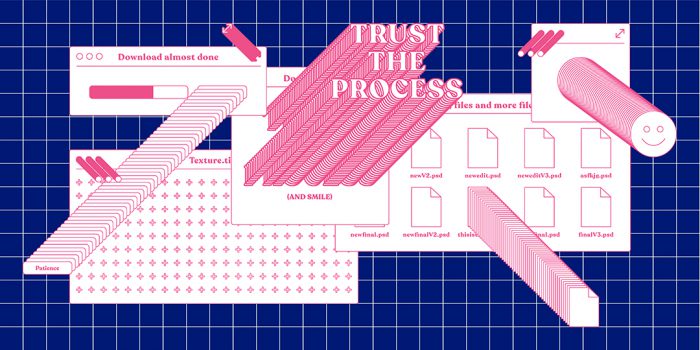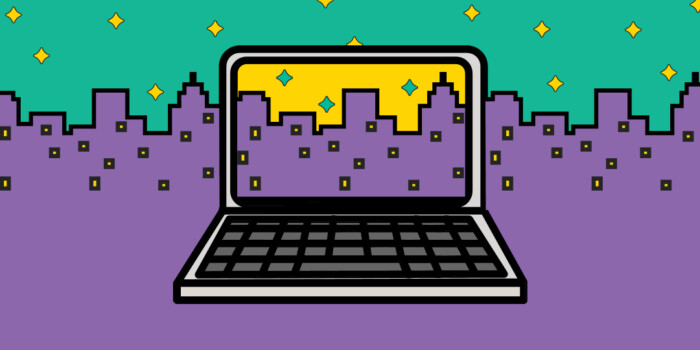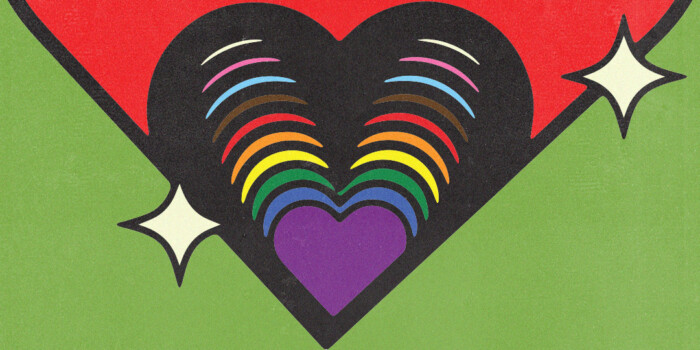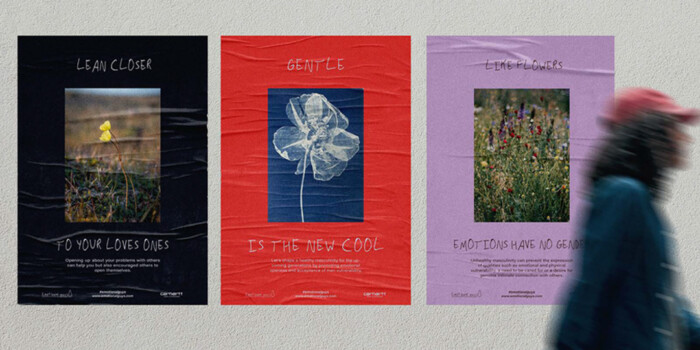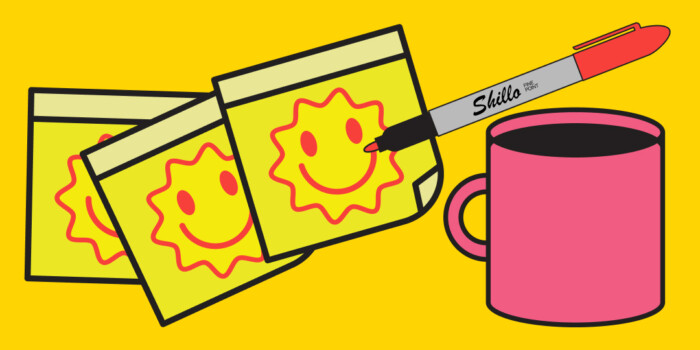Learning Graphic Design (Even If You’re A Beginner)
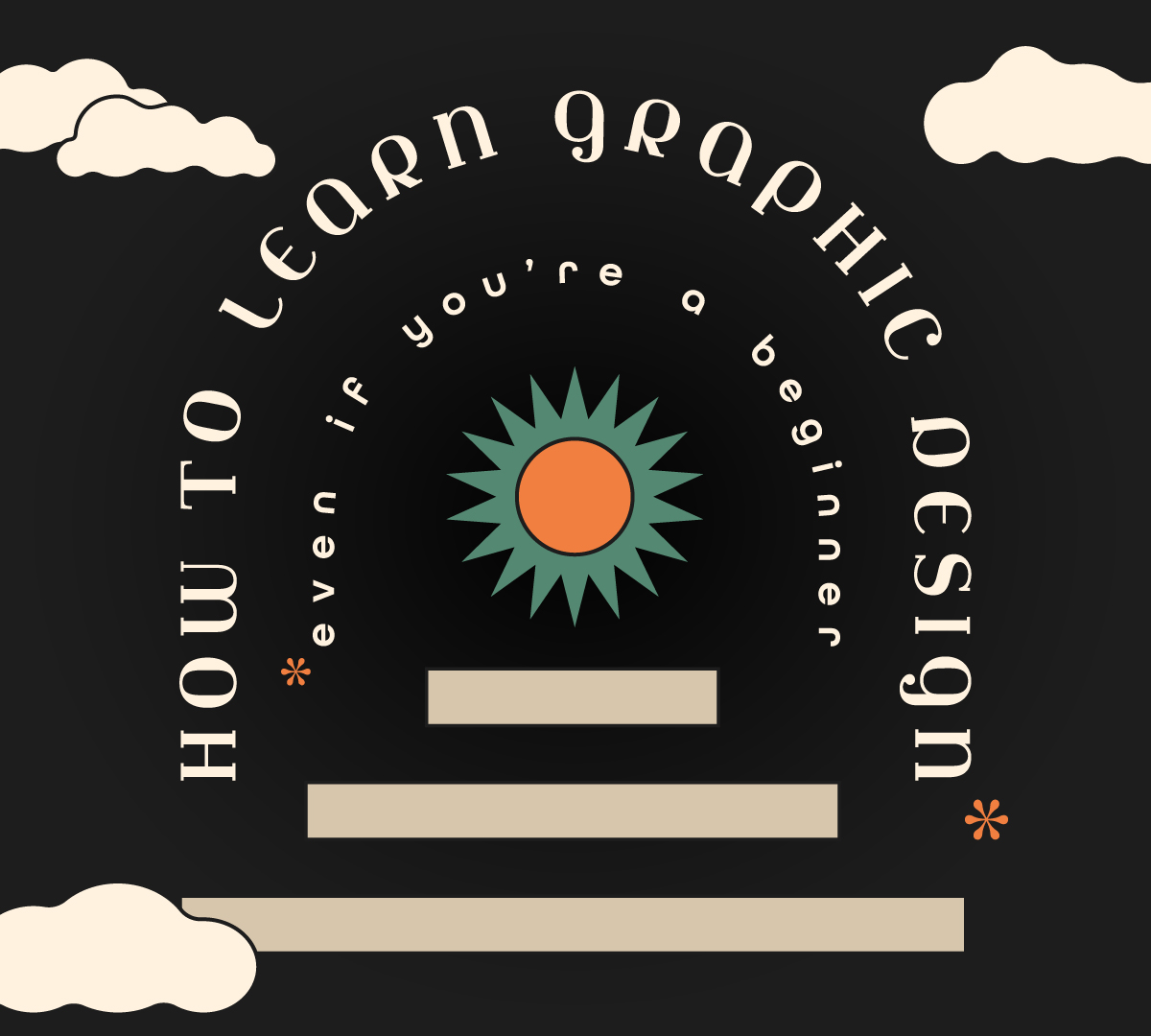
Are you wondering how you can start learning graphic design? Well, you’ve come to the right place! Maybe you’ve been wanting to make a career change to a more creative profession or need to add another skill to your CV—regardless of the reason, the importance is to take the first step.
Read on to learn more about the foundation of design as you begin your design journey, along with inspirational content to discover why taking a graphic design course could be beneficial for you and more!
Step 1: Learn the History of Graphic Design
By learning design history, its movements and designers, you’ll become more informed and appreciate not only the work of past designers but also take inspiration from current design practices. This will allow you to diversify your taste and learn about what makes good design. As you navigate the different design disciplines, start to pick areas that you’re drawn to and learn more about that subject to discover where your passions lie and areas you want to explore further.
As a designer, you will dedicate your life to learning new techniques and processes. Having knowledge of design history will enrich your skills as a designer as you learn more about the profession and past design movements. Knowledge of past movements and designers will enrich your skills, inform your approach to new projects and serve as inspiration for the work that you will create.
There are many places where you can get started with your design history knowledge, from podcasts to documentaries and design books. Want to get started building your own design library? We’ve curated this list of both classics and newer releases that can be a great starting point of important books to start reading. To get you started, be sure to add these five to your list:
- Graphic Design School: covers the essentials of visual design, theory and practical examples with case studies covering both print and digital.
- History of Graphic Design Vol 1: is a great starting point for your graphic design studies. This first volume from Jens Müller is a comprehensive history of 70 years of graphic design, designers and developments from the late 19th century to after the Second World War.
- History of Graphic Design Vol 2: is a comprehensive resource on the history of designing from the 1960s until the mid-2010s explaining the work of prominent designers like Massimo Vignelli, Paula Scher and Stefan Sagmeister, providing you a concise summary of key figures in design.
- 100 Ideas That Changed Graphic Design: gives an overview of the most influential ideas within the world of design from the 19th and early 20th centuries, highlighting key ideas and providing valuable insights that shaped post-war consumer society.
- Graphic Design Visionaries: goes beyond theory and focuses on 75 designers that shaped history, sharing their stories and important works. The book covers the development of design, mid-century design, corporate branding, typography, magazine design and iconic posters.
For more book suggestions, check out Shillington’s Book Club recommendations where Shillington teachers share their favorite books from their own personal libraries. And for some more inspiration, explore Design History 101 in the Throwback Thursday series on our blog for brief lessons on design legends like Aaron Douglas, Louise Fili, Alan Kitching, Emory Douglas and many more.
Step 2: Master the Graphic Design Principles & Process
Graphic design is the effective visual communication of an idea or concept. Design is all around us—from food packaging and logos to billboard posters—design is a daily part of our lives, enticing us to buy a product or helping with an everyday task like using an app on your phone.
Every designer knows the 5 key principles of design which are alignment, repetition, contrast, hierarchy and balance. These principles help to create a cohesive design, stability, organization, consistency, impact and a clear message. By following these fundamental principles, designers can solve visual and conceptual problems as a part of the design process, from the research to the idea generation and final outcome that answers the client brief.
In order for a piece of design to be successful, it needs to adhere to these fundamental design principles and how each one works together. Alignment helps to create a more cohesive and orderly design. And through repetition, the design is strengthened by tying the elements together through association, creating a familiar and consistent visual style.
On the other hand, contrast is a method to create emphasis within a design for impact, which can be seen in color choices, scale, or making specific text bold thereby creating a central focal point. To create an organization in your design, hierarchy helps to create a system where each element is organized according to its level of importance.
And, to achieve balance, the design needs to have structure through either symmetry or tension. Next time you’re looking at a design online or out on the street, try an exercise and see if you can identify these principles.
Step 3: Enrol in a Graphic Design Course (online or on campus)
Want to learn graphic design? One very eays way of doing this is to enrol in a graphic design course.
Any graphic design course worth its salt will teach you everything you need to know about graphic design and set you up to head out into the world as a graphic designer.
But if you don’t want to spend years training for your new career, you’ll need a graphic design course that will get you working as a graphic designer as quickly as possible—and we have the perfect course for you.
Shillington’s graphic design course is the best way to become a graphic designer. Our innovative approach to graphic design education means you’ll be on your way to a new creative career in no time. With an industry relevant curriculum, our course teaches aspiring designers all the skills and expertise and all important portfolio they need to work as a graphic designer in just three months full-time or nine months part-time.
Study Graphic Design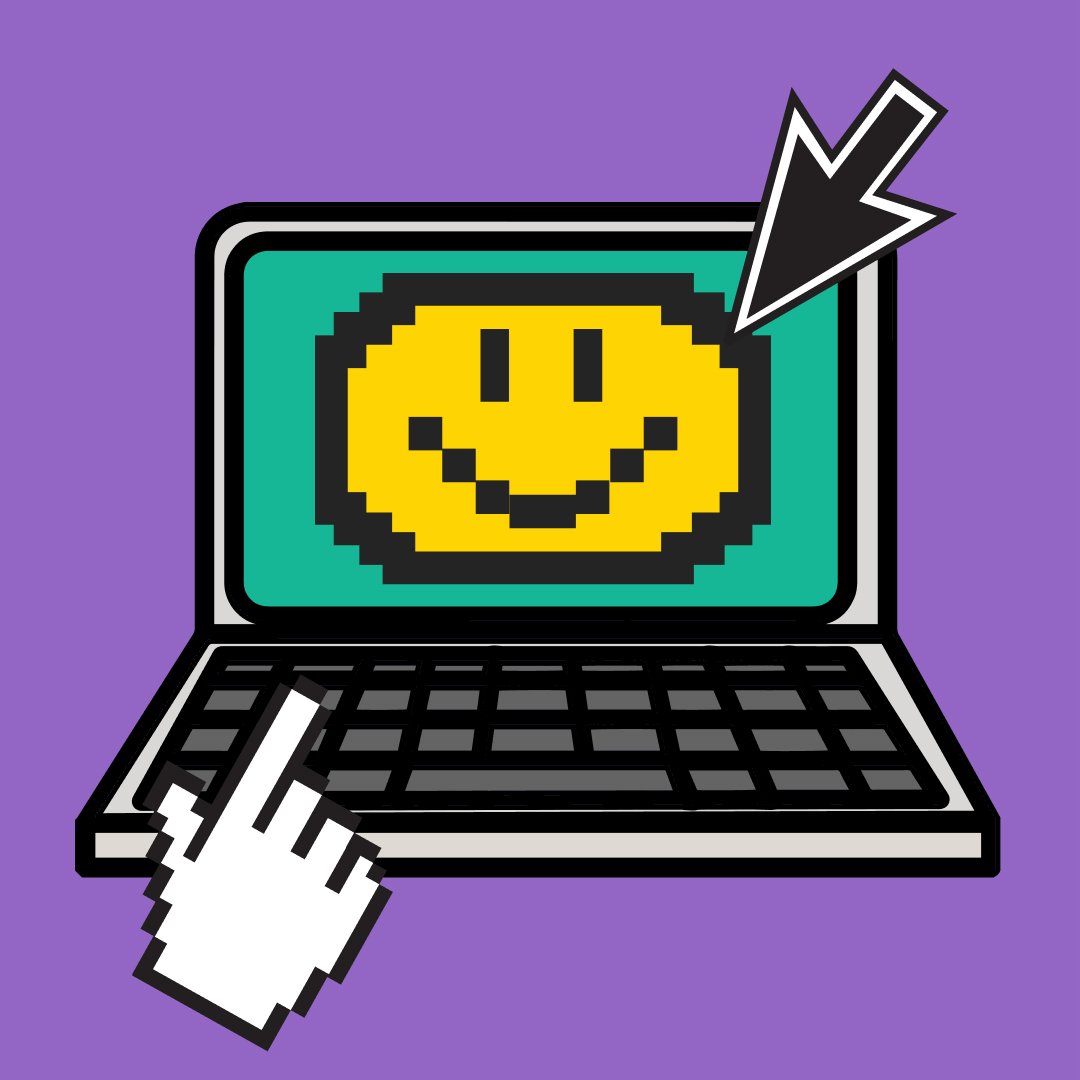
Step 4: Geek Out On Typography
Typography relates to the way copy is formatted and arranged within a layout and plays a pivotal role in graphic design. Type includes typefaces, point sizes, line-spacing, letter-spacing and kerning. As you navigate your way through design, you’ll learn about the differences between a sans serif and a serif, deepen your knowledge of typefaces and learn which fonts pair well with one another.
Typography gives character to a brand and is crucial to all communications, from magazine copy to advertisements and logos. By understanding typography, you’ll be able to justify typographic choices in your own work and how it can elevate the design. Apart from being central to the communication of ideas, type gives the design a specific mood through the tone of voice.
Type can be created by hand or digitally, but it’s also worth noting the different specializations within typography. Let’s review lettering, typeface design and typesetting in detail to learn more about each one:
- Lettering: custom-drawn letterforms created either by hand or digitally that can be used for logos, murals, signs, album artwork, advertising, products, wedding invitations and more.
- Typeface Design: is the creation of type characters that can be the full set from A-Z (along with numerals, punctuation, accents). Although some typefaces contain the full set, others can be limited to just upper case or only lowercase. The characters are created within a vector-based program like Adobe Illustrator before transitioning to an application like Fontographer for further refinement.
- Typesetting: is the process of laying out text within a layout, whether it’s a newspaper, brochure or magazine. The typesetter usually works with large blocks of text and establishes a hierarchical structure for the headings, quotes, captions and so on.
If you’re finding yourself curious about typography and possibly experimenting with letterforms, then why not explore some Instagram accounts to further familiarize yourself with some awesome creatives. We’ve compiled this list of Instagram accounts for type lovers and you should give these accounts a follow.
Step 5: Study the Fundamentals of Color
Color affects the mood and personality of a design. The best way to learn about color combinations is to look at the work of other designers and studios. You can then begin to create your own inspiration boards with color palettes that invoke different moods. You can also explore Adobe’s Color CC to further experiment with various color combinations. Palettes can be created from photos, prints, patterns or any other graphics that you find.
Color is such an important part of design because it can be used to affect the mood of design and the brand, being used as a tool to persuade and entice. Designers learn about the meaning of each color, color combinations and how the palettes can be used for emotive impact. When selecting colors for a design, it’s important to have a solid foundation of color and the science behind it. By understanding color theory, the designer can make the proper choice in the color selections to ensure the brand stands out and is relevant to the target audience.
The book Color Now: Color Combinations for Commercial Design Color is an excellent resource to help guide you in making thoughtful decisions about color use, color combinations and examples of successful projects for inspiration. By looking closely into the psychology of color, associations and its application, this book is your go-to manual for research and inspiration. Perhaps after reading this book, you’ll look at ads or apps more critically, and then learn to apply the concepts within your own work, ensuring the color palettes you select evoke an emotion that is aligned with the brand and audience.
Step 6: Learn Graphic Design Terminology
As you start learning more about graphic design, it’s also important to become acquainted with the terminology so that you can speak the same language as other designers. We’ve put together a list of 120 design terms to help you understand the meaning behind each one.
A few common terms you may have heard of include the golden ratio, rule of thirds, hierarchy, kerning, leading, tracking and x-height. By becoming fluent with the common design terms, you’ll be able to understand the “design speak” when meeting with other designers as well as communicating with your team.
Step 7: Master Graphic Design Programs
As a designer, you’ll need to learn the basics of the Adobe Creative Cloud (Illustrator, InDesign, Photoshop) and Sketch to learn how to work with them together to create everything from a logo to a poster or a book. By mastering the essential design programs, you’ll be able to tackle client briefs with ease. The top four you need to start with include:
- Adobe Illustrator: is a vector-based program that allows you to create shapes and draw using the pen tool. The great thing about the tool is that it allows you to create a broad range of artwork from logos to icons and illustrations. Plus, each graphic can be reproduced and expanded to any size since it’s a vector.
- Adobe InDesign: is a layout tool that can be used for both digital and print, working cohesively with Photoshop and Illustrator. As the industry standard, it’s a powerful program for creating multi-page documents, creating master pages and paragraph styles that can be used to create everything from magazines to brochures.
- Adobe Photoshop: is a powerful program used by many creative professionals from designers to developers and photographers. The purpose of the program is for image editing, retouching, image manipulation and creating compositions.
- Figma: is the standard for digital designers. A digital design (UI and UX) application for vector design and prototyping.
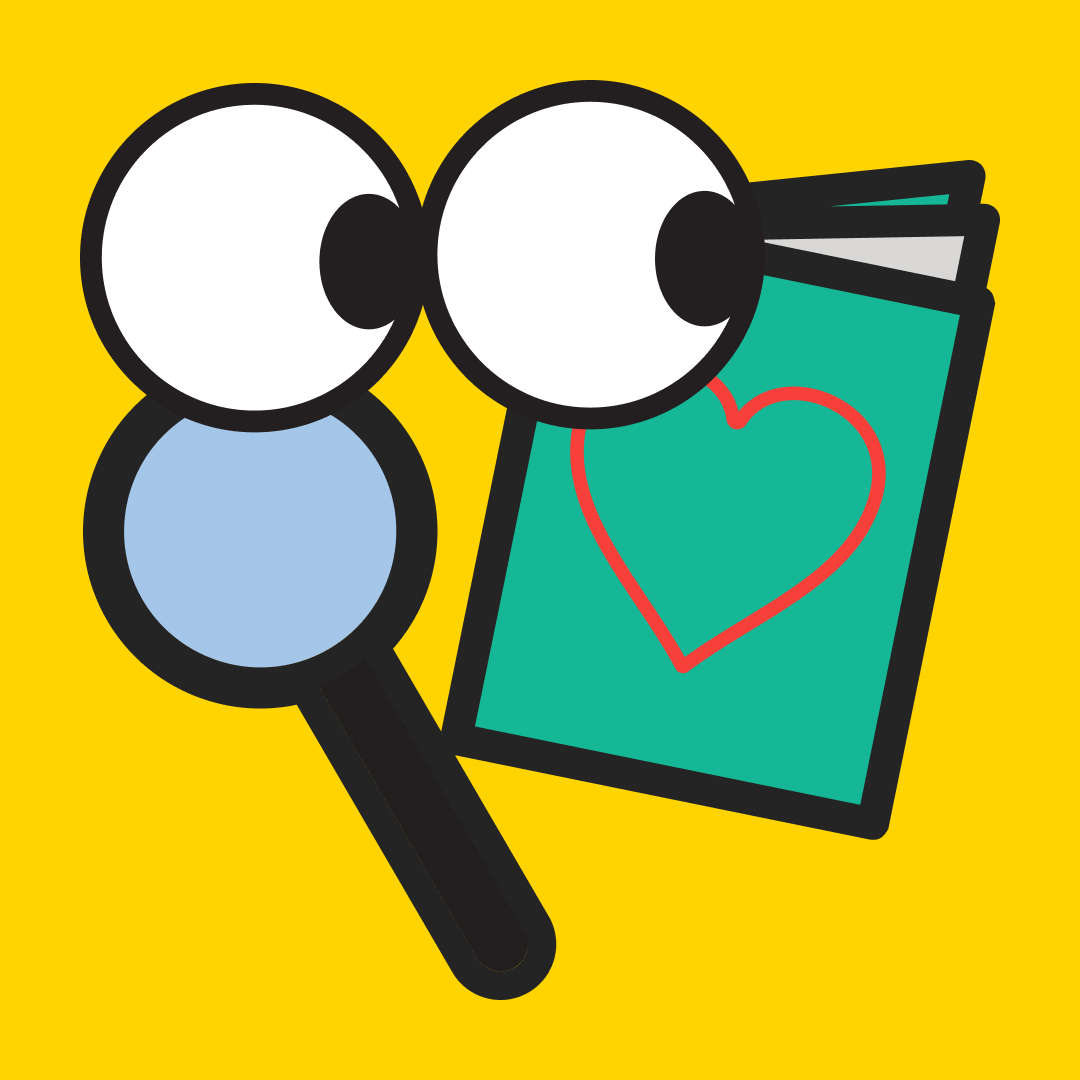
Step 8: Get Creatively Inspired
Looking through design blogs, design books, creative magazines and social media (Instagram, Pinterest, Behance) is a good starting point to discover what type of aesthetic you gravitate towards. By learning from the work of other designers, you start to learn about different styles and current trends. Over time you’ll begin to develop your own personal style based on your interests.
As a creative, it’s good to know what the latest trends are and what other designers are creating. By following blogs, you can get your dose of inspiration and maybe get a few new ideas in the process. We’ve put together this amazing resource of 50 blogs on art and design that you can explore so that you can stay up to date on what’s going on in the creative space, as well as push your creative projects forward. Here are a few to get you started:
- Create by Adobe: a magazine by creatives, for creatives—available online and as a mobile app. Visit them for inspiration and tutorials on photography, illustration, graphic design, web design, motion graphics, audio/video, branding and more.
- 99U: started by Adobe which is aimed at helping creative professionals within their careers. The practical articles offer guidance on productivity, positive work habits, work & life balance, personal branding, leadership and much more.
- Wix Creative: offers great content for creatives, from inspiration to tips and resources with helpful guides on topics from mood boards to creating an online portfolio.
- It’s Nice That: is a popular industry resource for top articles on design, art and illustration around the world.
- The Inspiration Grid: an online magazine that showcases global creative talent, providing you with the best in art, photography, illustration, design and typography.
To learn more about studios and other designers, take a look at the I Love These Geniuses selections from Shillington bootcamp students and staff from around the world to find out about the creatives who inspire them.
As any creative knows, Instagram is full of visual delight from illustration to lettering, photography and design. As the third most popular social media platform, it’s the perfect go-to for your daily inspiration and to connect with other creatives. To help you get started, take a look at our curated list of 100 Instagram accounts to follow to discover your new favorite creative.
Our next place to browse for inspiration, research and creating mood boards is on Pinterest. It’s the perfect platform to discover new boards and create themed boards that you can reference later or share with a friend. To save you time, we’ve put together our top 100 Pinterest accounts for graphic design inspiration that you can start following now and begin creating your own boards today.
And lastly, Behance is our next source for inspiration where you can discover top designers, typographers, digital artists and studios. Explore this list of 60 Designers on Behance that we think you should know about and bookmark for future reference.
Step 9: Get Social
Social media platforms like Dribbble, Behance and Instagram are great resources for not only discovering the work of other creatives but an opportunity to connect with other designers from around the world that you admire. By regularly publishing your work on these channels, you’ll be sure to get your work noticed by other designers. These platforms allow you to share your work and receive feedback for an ongoing exchange which can help you grow as a designer and possibly land your next job.
You never know what can develop from a new connection and find an unexpected opportunity. Through social media, you can exchange in conversations with other designers, share your latest work and ask for feedback from someone you admire. Stay engaged, join groups and follow companies that you respect. Want some tips on mastering your social media strategy and deciding which channels you should be sharing your work on? Then read this list of tips for Instagram, Twitter, Pinterest, LinkedIn, Facebook and portfolio websites.
Step 10: Submit your Graphic Design Work
Once you start producing your own work, updating your online presence should be an ongoing part of your overall strategy to ensure you gain visibility and get your latest projects noticed by other designers, recruiters and agencies. This is the first step to getting your work seen! Though social networks like the ones mentioned above are good places to share your designs, they’re not the only places where you should be showcasing your talents. Reach out to other sites such as blogs and online magazines to gain visibility with a broader audience.
There are a lot of websites out there and you may be wondering what are the best places to submit to? To help you out, we’ve put together a list of 40 design blogs you can familiarize yourself with and submit your work to. Here’s a preview of five favorites you can start with:
- Creative Review: the leading publication in showcasing the latest design work and supporting new talent. To submit your work, contact their editorial team.
- Visuelle: your go-to resource for graphic designers around the world for a daily dose of visual inspiration. To be considered, email submit@visuelle.co.uk.
- Creative Boom: has been the key player in celebrating creativity and curating a wide range of work from various disciplines. It’s also an amazing blog for expert tips and industry insights. To submit your project for consideration, go to their guidelines page.
- Eye On Design: one of the oldest associations for design in the United States and has a huge membership base. Their Eye On Design blog is the perfect destination to discover emerging and established designers. To apply, reach out to past blog contributors to be considered.
- Design by Women: founded by graphic designer Mary Hemingway and aims to showcase and champion female creatives from around the world, as well as to inspire other women. If you’re a creative working in design and identify as female, get in touch with Design by Women for a feature.
Getting your design work featured in magazines and blogs is an incredible way to advance, but equally, submitting to awards can help with gaining international exposure. A few popular design awards you can look into are The Design Kids Awards, Indigo Awards, AGDA, Creative Design Awards, Adobe Design Achievement Awards, Young Guns and the D&AD New Blood Awards.
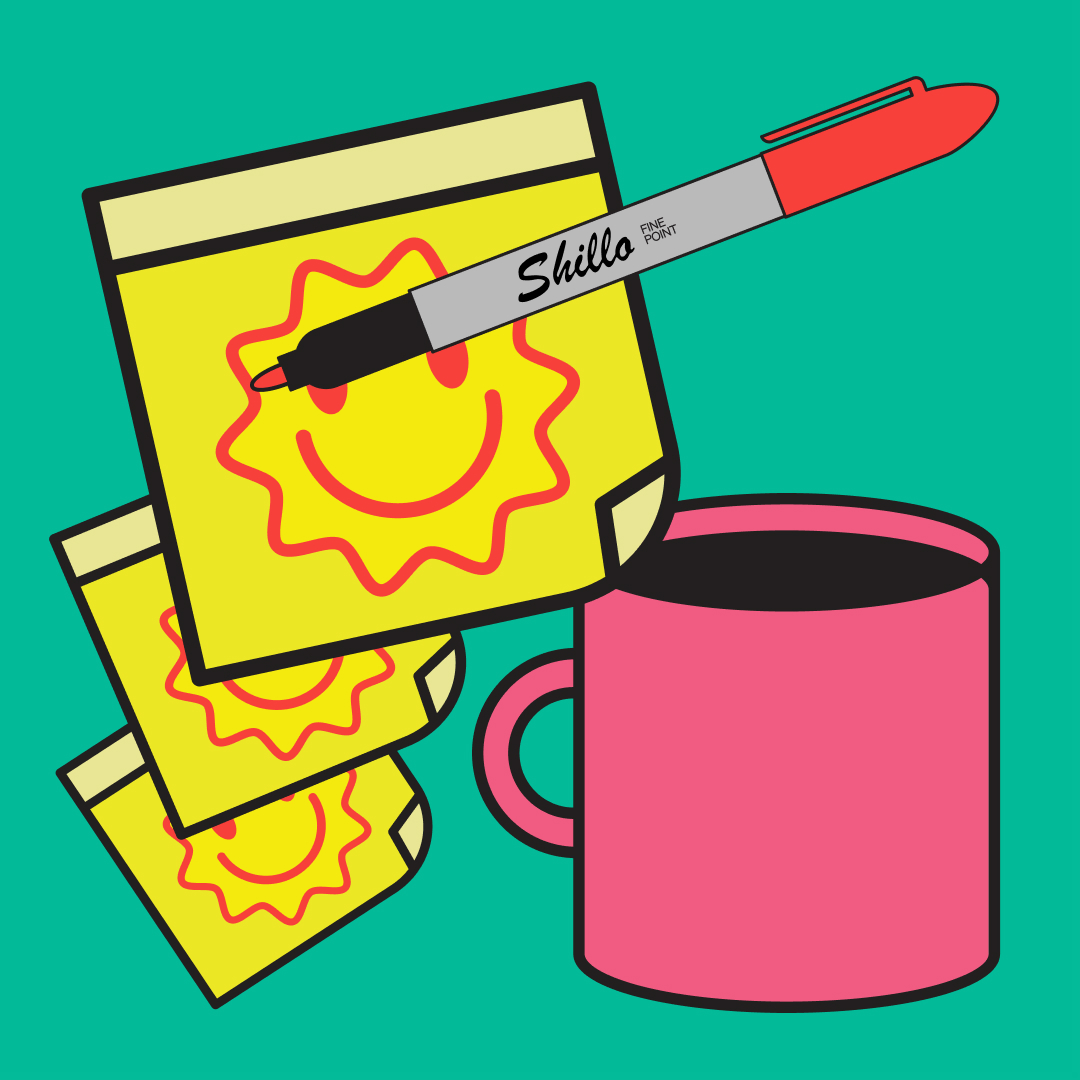
Step 11: Join Graphic Design Groups and Network
By attending design events (now virtually!), joining global and local design groups and professional organizations, you can network with other creatives to build your connections in the industry. By connecting with and learning from fellow designers, you can create long-lasting friendships and potentially find a mentor (which is great even if you’re not a beginner) who can help you in your design career.
As a creative, especially when you’re a beginner first getting started, you’ll need to continue learning as much as you can and network. But of course, the learning never ends, especially when you want to ensure your long term success. As technology is constantly evolving, you too need to learn about the software, new techniques and ways to be a more efficient designer. Taking a design course is an important step in gaining practical knowledge and building a portfolio, but the learning doesn’t end beyond school. As a designer, you need to stay curious and continue self-training.
A few popular creative events you can bookmark to stay in the loop about future happenings are:
- Adobe Max: offers live and on-demand content that you can watch on topics relating to creativity, technology and entertainment—with over 300 sessions to watch, there’s plenty to choose from depending on your interests.
- Adobe 99U: the annual conference is aimed at inspiring creatives through keynote speakers, workshops, talks and masterclasses so that you can reinvigorate your work with new ideas and network with other creatives. Some famous past speakers include Debbie Millman, Adam Kurtz, Tina Roth Eisenberg and Michael Bierut.
- Nicer Tuesdays: monthly event with talks featuring four speakers from around the world that talk about their latest project. Every month there’s an incredible line-up of speakers you should not miss.
- Creative Mornings: hosts virtual events in cities around the world centered on a different monthly theme. They also provide a platform called FieldTrips which are meetups where you can interact with others, learn and collaborate.
- Wix Playground: hosts monthly events that include workshops, talks and portfolio reviews hosted by creatives for designers. Topics covered include type inspiration, illustration and talks with well-known creatives about their career to name a few.
- Ladies, Wine & Design: is a global group started by Jessica Walsh with the aim of promoting diversity in the creative industry and creating a space inclusive of all women. Through the group, there is a free mentorship offering, along with portfolio reviews and creative meetups.
For local design events in your home city, check out the Design Event listing on the Shillington blog.
Step 12: Explore Creative Career Paths With Your Graphic Design Knowledge
As you’re learning more about graphic design, start thinking about the type of creative work you’re interested in. The design industry is constantly evolving and an exciting career to pursue. As a designer, no day is ever the same and you will be tackling a wide variety of projects at a fast pace. A job as a graphic designer is in high demand with some impressive starting salaries and a promising trajectory.
While you’re in the exploratory stage and learning more about design, start thinking about the type of work you want to specialize in, such as UX/UI Designer, Visual Designer, Digital Designer, Creative Director, 3D Designer, VR Designer, Muralist, Product Designer, Motion Designer, Animator and so on.
There’s nothing better than working in a field that you love and are passionate about. It’s exciting to have so many different career options to choose from as a creative once you’ve acquired the training. If you start off as a junior designer, your career can progress to an art director and after a few years in the industry, you may choose to go freelance or start your own studio. If you didn’t start off in a creative industry, it’s not too late to change paths.
Want to hear from other designers who took the plunge and changed careers? Find out about their stories and discover how they were able to change from working in various professions like marketing to accounting and become a full-time designer.
Learning graphic design offers many opportunities in the type of work that you can be doing. To help you decipher the world of design and the different areas you can take in your professional career, we broke it down into several parts:
- Branding/Visual Identity Designer: whether it’s an individual, startup or small company, every business has its unique story to tell. As a designer, you would work with the client to develop the brand identity to bring the brand to life.
- Advertising & Marketing Designer: as advertising is all around us, from billboard posters to social media ads and Youtube advertisements, the advertising designer’s role is to create a concept that is targeting the demographic of the product.
- Digital Designer: refers to design produced on a screen and covers everything from User Interface (UI) for websites to apps. As a digital designer, you will be working on all the visual elements for the digital experience. Based on your design, UI developers code to bring the final product to life.
- Product Designer: as a product designer you are part of the entire design process for the product and can be in one of these roles—Interaction or UX Designer, Graphic or Visual Designer, User Researcher, Data Analyst, Prototyper or Business Strategist.
- Editorial Designers: are responsible for the design of magazines or books, such as creating a cover, layout and graphics. As an editorial designer, you’re responsible to convey the idea of the editorial.
- Packaging Designers: make a significant impact on the visibility of the brand in the market through creating the packaging for a new brand or redesigning old packaging which can greatly impact the brand image and boost product sales.
- Typeface Designers: combine their knowledge of typography to create typefaces. As you already know, typography is an integral part of visual communication and typographers are essential to design and know the ins and outs of typography. Looking to familiarize yourself with some of the best type foundries? Multidisciplinary designer Tobias van Schneider shares his picks of some of his favorites from Milieu Grotesque to Hoefler & Co.
- Human-Centered Design: is also known as design thinking that informs all facets of design and the design process—identifying the problem and then finding the solution. Essentially finding an effective way to solve the design problem.
- Design for Good: focuses on the user as part of human-centered design and social change for positive impact and making the world a better place.
- Ad Agency or In-House Marketing Design: when you’re beginning as a designer, you may ask yourself if you want to work at a studio, ad agency or in-house for a company. Of course with the choice you make there are always positives. With an in-house role, you will be part of the team and work according to the brand guidelines, becoming an expert in the overall direction of the brand. However, working at an agency you’ll work across a broad range of products and get to apply your knowledge and skills in different industries.
- Freelancer: want to go freelance after graduating? It’s an excellent path if you want to work from anywhere in the world! Working as a freelancer comes with additional responsibilities where you have to find clients, handle contracts and build your own brand. To learn more, hear from the Liverpool designer Matt Pealing who offers some advice on how to succeed as a freelance designer and what tactics you can use to build up your client list.
Step 13: Start a Passion Design Project
Passion projects are a wonderful way to develop a new skill that is outside of your comfort zone or start a self-initiated project that is connected to what you’re passionate about. The work that you develop can turn into an interesting series and a future addition to your portfolio.
If you’re in need of some creative inspiration and have the time to start something new, take a look at these six approaches to start a new project, either solo or to collaborate with another creative. Apart from learning new skills or collaborating with another creative, you can start with self-initiated timed experiments, creative or design challenges.
As with any project that you initiate on your own, don’t put too much pressure on yourself, allow yourself to experiment freely and make this a time for play. To get those ideas flowing, you can browse other designer portfolios, explore creative blogs and scroll through Pinterest or Instagram. For some ideas on creative projects, check out this list that Format put together for seven design projects to get those creative juices flowing regardless of your background.
The graphic design track can be perfect for you if you have a creative eye and an endless curiosity about the world around you. By committing yourself to a practice of learning and applying the skills you learn daily, you’ll be well on your way to becoming a graphic designer. You may even want to deepen your knowledge and gain a certificate in graphic design so that you can advance your skills even further and set yourself apart from the competition.
Are you ready to take the leap and launch a fulfilling career that excites you? Find out about the upcoming full-time, part-time and online graphic design courses at Shillington. You’ll learn the skills needed to become a graphic designer and develop a polished portfolio, ready to start a new career in just nine months or less.
Want to learn more about our graphic design course?
Learn MoreHeader artwork design by #ShilloOnline teacher Emily Comfort.
Want to win some amazing prizes and stay in the loop with all things Shillington? Sign up to our newsletter to automatically go in the draw.



